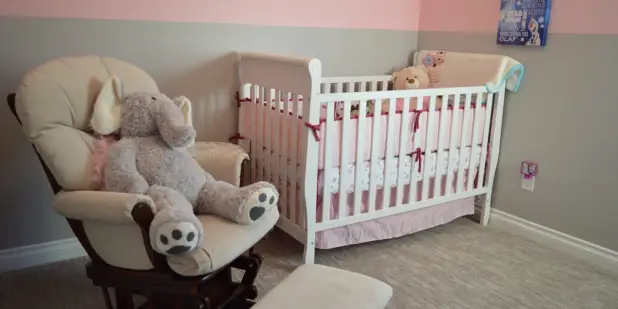EAC Certification for Children's Furniture
Every product designed for babies, children, and adolescents is subject to EAC certification, and children's furniture is no exception. While ordinary furniture intended for export to Russia and other countries of the Eurasian Economic Union is subject to declaration, furniture for babies, children, and adolescents requires an EAC certificate.
To identify furniture as children's furniture, it is important to note that there are no specific characteristics, such as color, design, or type of material, that define a piece of furniture as children's furniture.
Initially, it depends on how the product is defined by the manufacturer. If the manufacturer states that the furniture is intended for general use, an EAC declaration is required. Conversely, if the furniture is described as suitable for children, an EAC certificate is necessary.
TR CU Guidelines for Children's Furniture
The safety requirements for furniture are established in the Technical Regulation TR CU 025/2012 - Safety of Furniture and Household Accessories.
It should be noted that in the specific guideline created for the safety of products for children and adolescents, TR CU 007/2011 - Safety of Products for Children and Adolescents, furniture products are excluded from the relevant jurisdiction.
The EAC certification of children's furniture is carried out in accordance with the safety requirements of the Technical Regulation TR CU 025/2012 - Safety of Furniture and Household Accessories.
Additionally, a voluntary GOST certificate can be applied for at the initiative of the applicant to assure customers of the quality of the furniture. Products certified according to GOST standards can be marked with a GOST label.
TR CU 025/2012 - Safety of Furniture
The Technical Regulation TR CU 025/2012 - Safety of Furniture and Household Accessories distinguishes all furniture, including children's furniture, based on their intended use and the materials from which they are made.
The intended use of the furniture is an important parameter that plays a decisive role in EAC certification. Depending on the intended use, children's furniture is designed for home use, for furnishing schools and kindergartens, as well as for entertainment facilities.
Furniture is distinguished by its functional purpose:
- Storage furniture for personal items
- Seating furniture, e.g., chairs, couches, benches, armchairs
- Desks and tables for various purposes
- Combining, multifunctional furniture
- Upholstered furniture such as beds and sofas
- Mattresses
- Kitchens
All products that fall into one of these categories can be designated and referred to as children's furniture.
The Technical Regulation TR CU 025/2012 – Safety of Furniture applies to:
- Children's beds
- Children's desks
- Children's multifunctional furniture
- Children's mattresses
- Play areas
A special feature is the mattresses. Mattresses also fall under TR CU 025/2012 – Safety of Furniture but are subject to stricter safety inspections.
The TR CU 025/2012 - Safety of Furniture does not apply to:
- Antiques
- Used furniture
- Display samples
- Medical devices
EAC Certification Procedure for Children's Furniture
An EAC conformity assessment is carried out by adhering to the following measures:
- The applicant submits a series of technical documents
- EAC experts analyze the product and select the assessment scheme
- The parties conclude a cooperation agreement
- Conducting the production audit
- The selection of product samples is carried out
- The product samples are sent for laboratory examination
- If the examination result is positive, an EAC certificate is registered
The combination of measures applied in a specific case depends on the EAC assessment scheme.
An EAC certification for the Eurasian Economic Union can be conducted by a manufacturer, a supplier, or an authorized representative, who then acts as the authorized applicant.
To confirm the compliance of the products with the established requirements of EAC certification, the applicant must submit an application to an accredited testing body located in the Eurasian Economic Union and provide the necessary documents.
The following documents are required for the EAC certification of children's furniture:
- Product description (type, purpose, construction features, assembly instructions)
- Technical documentation according to which the children's furniture was manufactured
- Certificates for materials and components
- Details of the applicant
- Details of the manufacturer
- User manual
Other documents may also be required.
After reviewing the product information, the certification service provider establishes the EAC certification scheme according to which the quality of the products will be assessed.
There are three EAC certification schemes for children's furniture:
- 1C for series production
- 2C for series production with QMS certification
- 3C for individual production
The validity period of an EAC certificate for children's furniture is 1 to 5 years. During the validity period of the EAC certificate, the applicant can sell the goods without restrictions. Safety tests for children's furniture are conducted in an independent accredited laboratory of the EAEU. The results of the tests are recorded in the protocol.
The following properties are examined during the EAC certification of children's furniture:
- Microbiological safety of children's furniture
- Mechanical strength of the furniture
- Toxicological harm
- Fire protection
If electrical devices are integrated into the children's furniture, they must have an EAC declaration or an EAC certificate in accordance with TR CU 004/2011 - Safety of Low Voltage Equipment and an EAC declaration or an EAC certificate in accordance with TR CU 020/2011 – Electromagnetic Compatibility.
Based on the data obtained, an employee of the EAC certification body decides whether an EAC certificate will be issued or not. If the inspection finds that the product meets the specified requirements, the document is entered into the unified register of the Eurasian Economic Union and issued to the applicant.
Voluntary Certification of Furniture Products
After passing the mandatory examinations of EAC certification, the company has the right to obtain a voluntary quality certificate for children's furniture. According to the Federal Law on Technical Regulation 184-FZ of December 27, 2002, a conformity assessment only includes quality analyses of product characteristics that the manufacturer deems necessary.
The examination determines whether the furniture meets the quality requirements according to national GOST standards and TR ZU norms. If the test is positive, the manufacturer has the opportunity to register an additional GOST certificate for 1 to 3 years.
A voluntary GOST certificate gives the entrepreneur the right to label products with a special GOST marking to attract customer attention. This allows furniture companies to find new business partners and expand their distribution markets.
EAC Marking for Children's Furniture
EAC marking for children's furniture must include the following information:
- Product name or designation
- Information about the manufacturer with company logo
- Information about the authorized representative
- Information about the importer
- Country of manufacture
- Date of manufacture
- EAC marking
- Warranty periods
It is required that products be marked with consumer information. If the furniture is specifically designed for children, it must include height specifications. If the children's furniture is sold disassembled, it must include assembly instructions.
Costs of EAC Certification for Children's Furniture
The costs and duration required for the issuance of an EAC certificate or an EAC declaration depend on several factors, which are often associated with significant effort.
The following factors determine the costs and duration of EAC certification:
- Type of certification (EAC declaration, EAC certificate, SGR registration)
- Safety level and harm to humans and the environment
- Number of components and parts
- Complexity of product components
- Series delivery or individual delivery
- Type or product group
- Number of mandatory tests
Only after the submission of the required documents and a precise assessment of the effort can it be clarified how high the costs for the respective EAC certification or EAC declaration will be and how long the EAC certification will last.
The necessary examinations, such as inspections or audits, can further increase the costs. The Technical Regulations of the Eurasian Economic Union (EAEU) clearly define which product groups must be certified according to which EAC conformity procedures.
Legal Situation of EAC Certification for Children's Furniture
In principle, the EAC certification of children's furniture is based on the Technical Regulation TR CU 025/2012 - Safety of Furniture and Household Accessories.
Furthermore, the decision N319 of the EAEU on technical regulation in Russia and the other countries of the Customs Union and the decision N620 of the EAEU on the unified EAC standardization within the Eurasian Economic Union for EAC certifications are taken into account.
In the EAEU free trade zone consisting of Russia, Kazakhstan, Belarus, Kyrgyzstan, and Armenia, all EAC certifications are conducted according to the same principle. The format of the documents is detailed in regulation N896 and serves as the legal basis for certification and declaration.


